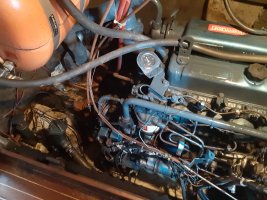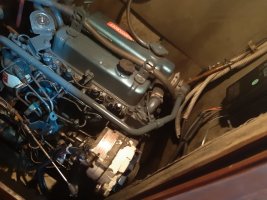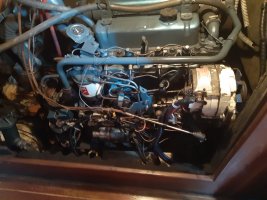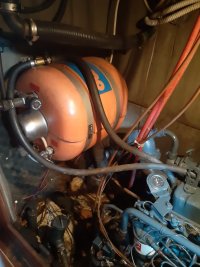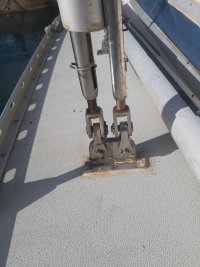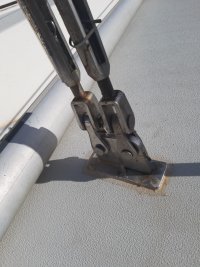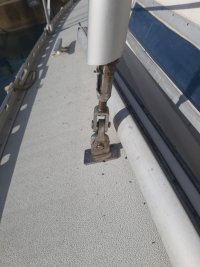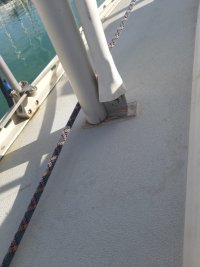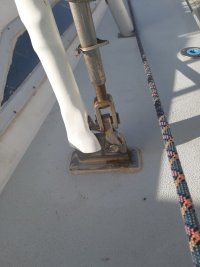Hello Moody community,
Could you kindly help me to make a decision.
I am looking for Moody and on the market I see another possible choice -- https://www.inautia.com/used-boat-42883030201769565049655248544568.html
But in this case I am worried about two things:
1. Engine.
Thornycroft T 108 48 Hp. More than 5000 moto hours, built around 1985. How was it maintained is unknown.
What is your experience with these engines? How long should I expect it to last? I know new engine would be advisable, but I wonder if that should be a priority at once.
Photo below is of the actual angine in question.
2. In mast furling.
I am familiar with in mast furling a bit. But I prefer sails with the proper shape. In my opinion, slab reefing is much safer and in case all lines leads to cockpit -- easier to operate. I know, some of you have oposite expierence and opinion.
My question is could you tell me how much could it cost and how big of a deal is to change from in-must furling to slab reefing. What is your experience?
Or maybe someone of you could tell me after look to photo -- this si original in mast furling system or the tube riveted on the back of the mast
Is it these two things a deal breaker when buying a boat?
Thank you for your time and opinions.
Rokas (Saugus Vejas)


Could you kindly help me to make a decision.
I am looking for Moody and on the market I see another possible choice -- https://www.inautia.com/used-boat-42883030201769565049655248544568.html
But in this case I am worried about two things:
1. Engine.
Thornycroft T 108 48 Hp. More than 5000 moto hours, built around 1985. How was it maintained is unknown.
What is your experience with these engines? How long should I expect it to last? I know new engine would be advisable, but I wonder if that should be a priority at once.
Photo below is of the actual angine in question.
2. In mast furling.
I am familiar with in mast furling a bit. But I prefer sails with the proper shape. In my opinion, slab reefing is much safer and in case all lines leads to cockpit -- easier to operate. I know, some of you have oposite expierence and opinion.
My question is could you tell me how much could it cost and how big of a deal is to change from in-must furling to slab reefing. What is your experience?
Or maybe someone of you could tell me after look to photo -- this si original in mast furling system or the tube riveted on the back of the mast
Is it these two things a deal breaker when buying a boat?
Thank you for your time and opinions.
Rokas (Saugus Vejas)

